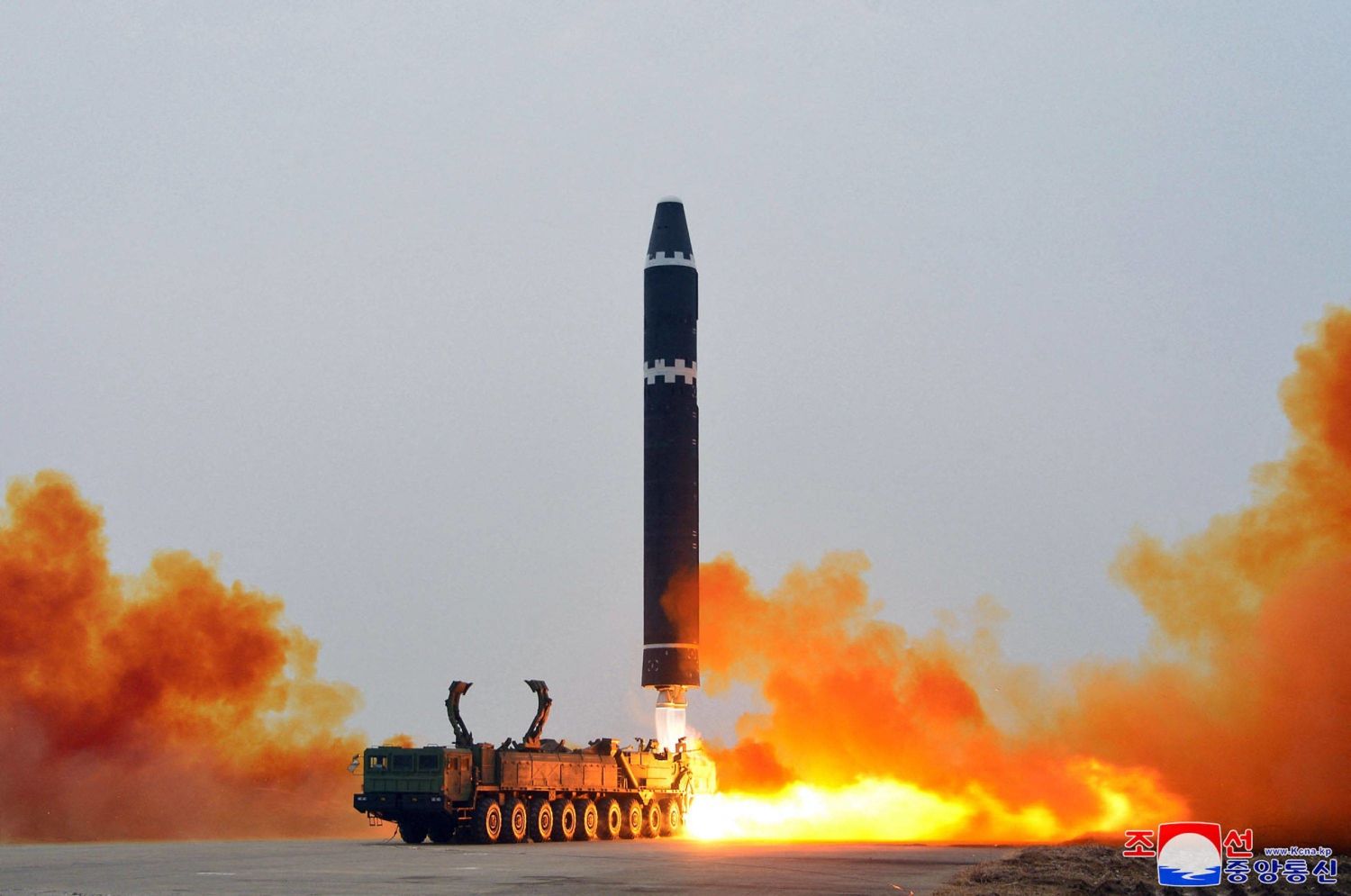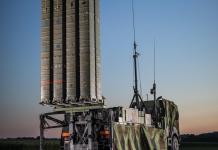North Korea and Iran, both designated as ‘State Sponsors of Terrorism’ by the United States, have recently made headlines due to their nuclear aspirations and strengthening bilateral relations.
North Korea and Iran, both labeled as part of the “Axis of Evil” by former U.S. President George W. Bush, continue to be a focal point of international concern due to their strengthening bilateral relations and nuclear ambitions.
Today, a single word dominates the discourse in military and political circles of both Iran and North Korea: ‘Nuclear.’ Their pursuit of nuclear capabilities has become a dominant theme in global security debates, raising alarm
North Korea’s Nuclear-Capable Missile Launchers
In a significant military escalation, North Korean leader Kim Jong Un has announced the deployment of 250 new “tactical ballistic missile launchers” along the border with South Korea. This information was reported by North Korea’s state-run Korean Central News Agency (KCNA).
These launchers are believed to be transporter erector launcher vehicles (TELs) for the Hwasong-11D short-range ballistic missile (SRBM). Kim has previously claimed these missiles can be equipped with nuclear warheads. Each TEL can carry four missiles, potentially placing up to 1,000 nuclear-capable missiles at South Korea’s doorstep.
Kim warned that “this is just the first stage of our plans to build up front-line missile forces” and promised to “show the whole world the unfiltered view of generational updates for new military equipment every year.” He asserted that such updates have a “particular deterrent effect” on enemy countries.
This move significantly increases tensions in the region and raises concerns about the potential for conflict on the Korean Peninsula.
Iran’s Nuclear Ambitions
Recent developments suggest Iran may be closer to nuclear weapons capability than previously thought.
On May 11, Iranian lawmaker Ahmad Bakhshayesh Ardestani claimed that Iran has achieved nuclear weapons capabilities, though this has not been officially confirmed.
Ardestani stated, “In my opinion, we have achieved nuclear weapons, but we do not announce it,” adding that Iran’s policy is to possess nuclear bombs while maintaining a public stance aligned with the JCPOA, reported Iran-based news outlet Rouydad 24.
U.S. Secretary of State Antony Blinken raised alarms on July 19, stating that Iran’s nuclear breakout time —the period needed to produce sufficient weapons-grade material for a nuclear weapon— might now be just “one to two weeks.”
The International Atomic Energy Agency (IAEA) Director Rafael Grossi reported that Iran has enough uranium to produce “several” nuclear bombs.
The Biden administration has privately warned Iran about its research and development activities potentially leading to nuclear weapon production, as reported by Axios. U.S. and Israeli intelligence revealed Iranian scientists’ involvement in computer modeling and metallurgical research relevant to nuclear weapons development.
U.S. Senator Lindsey Graham, citing a Director of National Intelligence report, recently stated that Iran appears to be ‘on the brink of becoming a nuclear-armed state.’ These developments have heightened international concerns about Iran’s nuclear program and its potential impact on regional and global security.
Iran & North Korea’s Strategic Partnership
Iran and North Korea, both adversaries of Western powers and their regional allies, have developed a strategic partnership over decades. This alliance aims to counter U.S.-led sanctions and containment efforts.
The collaboration dates back to the Iran-Iraq War (1980-88) when North Korea supplied Iran with conventional weapons, defying Western policies. This initial support evolved into a robust partnership in the 1990s, focusing on advanced ballistic missile development.
Both countries have been designated as state sponsors of terrorism by the U.S. for extended periods. While North Korea was temporarily removed from this list (2008-2017), Iran has remained on it since 1984.
The partnership has yielded significant military technology transfers. In 2006, Iran’s Islamic Revolutionary Guard Corps confirmed acquiring Scud-B and Scud-C missiles from North Korea during the Iran-Iraq War. A 2019 U.S. Defense Intelligence Agency report revealed that Iran’s Shahab-3 ballistic missile was based on North Korea’s Rodong designs.
Recent reports also suggest that Iran’s Emad medium-range ballistic missile, used in an attack on Israel in April 2024, is believed to be derived from the Shahab-3, which Iran began using in 2003.
This ongoing collaboration in missile technology underscores the enduring nature of their partnership and its impact on regional security dynamics.
The CRINK Alliance
China, Russia, Iran, and North Korea (CRINK) have strengthened their alignment in recent years, partly in response to U.S. pressure and global events such as the Russian invasion of Ukraine. This alliance seeks to challenge U.S. and Western dominance in global security, politics, and economics.
Iran has reportedly supported Russia’s military actions in Ukraine with armed drones, potentially a range of ballistic missiles, and other weaponry. North Korea has been accused of supplying ammunition for the conflict.
In 2022, Russia sought sophisticated Iranian-designed drones, including the Shahed and Mohajer series – which have been used to target Ukrainian civilian and military infrastructure. China and Russia have also facilitated Iran’s involvement in multilateral partnerships aimed at challenging Western dominance in global political and financial systems.
North Korea recently renewed diplomatic ties with Iran after a five-year hiatus. From April 24-25, Yun Jong Ho, North Korea’s Minister of External Economic Relations, led the delegation to Iran following his recent visit to Russia. While officially focused on economic cooperation, this move has raised concerns about potential military discussions.
Both countries have expressed support for Hamas in its conflict with Israel. North Korea is backing the Palestinian cause and opposing Israel’s actions against Hamas in Gaza. North Korean state media has accused Israel of “terrorism” against Iran following the Hamas attack on October 7, 2023.
In December, the Israel Defense Forces (IDF) reported finding North Korean weapons in Gaza, supporting assessments by South Korea’s National Intelligence Service (NIS) that North Korean arms have been used by Hamas.
Israeli and other officials suggest these weapons may have been transferred years ago and not in direct response to recent conflicts. The NIS is also investigating whether North Korean weapons technology was used in Iranian ballistic missiles launched at Israel on April 14, 2024.
U.S. intelligence has long suggested that Iran may be developing long-range missile capabilities. However, Tehran has so far limited its missile range to 2,000 kilometers, which covers the region but does not directly threaten Western Europe.
Currently, a major concern for the United States is the possibility that Iran might seek to acquire North Korea’s Hwasong-15 ICBM. The possibility of Iran acquiring North Korean ICBM technology is potentially part of a strategy to pressure Israel from multiple fronts.

This expanded cooperation between Iran and North Korea could significantly impact regional stability and geopolitical dynamics. U.S. State Department spokesperson Matthew Miller stated that the United States is “incredibly concerned” about the growing military cooperation between North Korea and Iran.
For North Korea, strengthened ties with Iran may provide access to additional sources of military technology and economic cooperation, offering much-needed foreign currency. However, domestically North Korea’s focus on heavy industries, despite their inefficiencies, could lead to worsening living standards for ordinary citizens but might serve as a sustainable strategy for the regime amid rising global tensions.
The potential proliferation of nuclear and advanced missile technology among these nations raises significant global security concerns.
The Nuclear Domino
As North Korea expands its nuclear-capable missile arsenal and Iran potentially inches closer to nuclear weapon capabilities, the risk of proliferation and regional destabilization grows.
Their mutual support through technology sharing, economic collaboration, and diplomatic alliances has strengthened their resistance to international pressures and sanctions.
The growing CRINK alliance presents a significant challenge to U.S. interests and the established global order. The United States and its allies face a complex task in addressing this evolving threat.
Traditional methods of isolation and economic sanctions have proven largely ineffective in curbing Iran and North Korea’s nuclear ambitions. The involvement of major powers like China and Russia adds further layers of complexity to diplomatic efforts aimed at containment. This geopolitical shift demands a reevaluation of current strategies.
- Shubhangi Palve is a defense and aerospace journalist. Before joining the EurAsian Times, she worked for E.T. Prime. In this capacity, she focused on covering defense strategies and the defense sector from a financial perspective. She offers over 15 years of extensive experience in the media industry, spanning print, electronic, and online domains.
- Contact the author at shubhapalve (at) gmail (dot) com.




